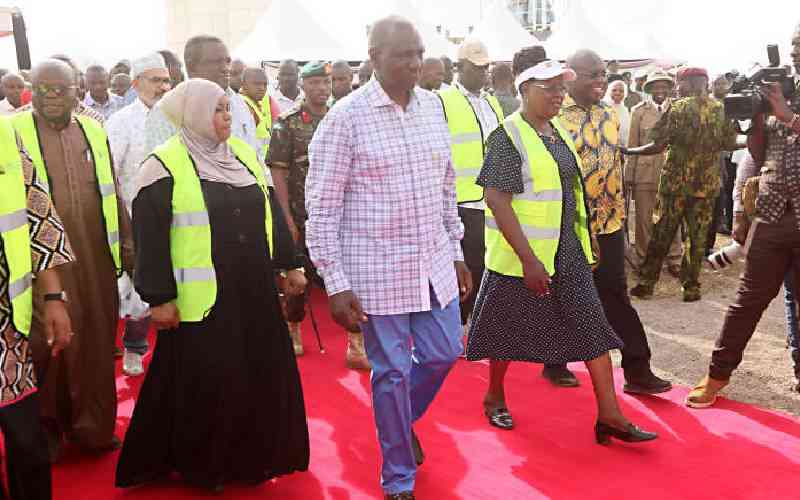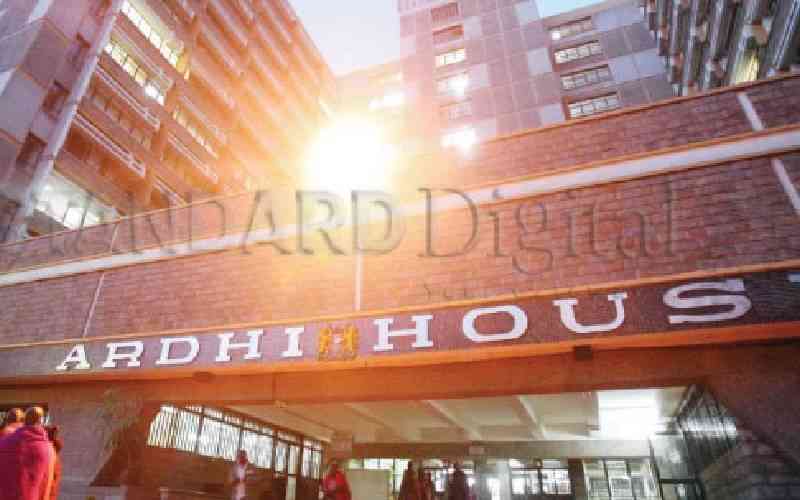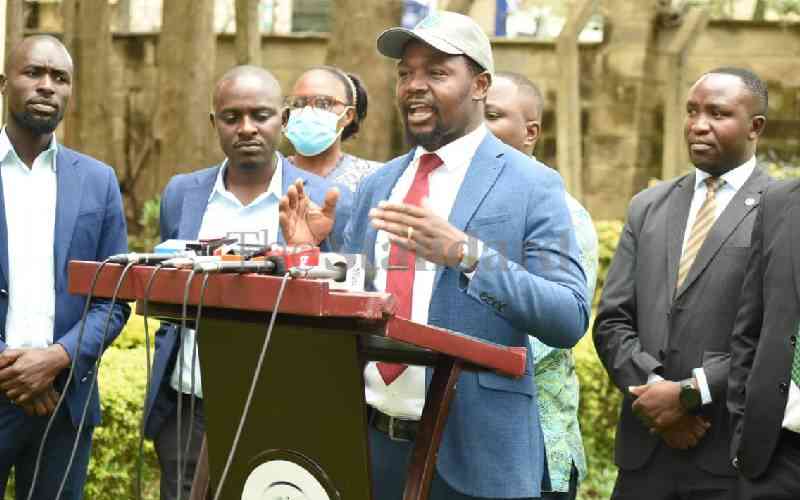In the past two months, land issues have dominated discussions in public and private forums. Among the highlights of land matters during that period was the closure of national lands headquarters for 10 days, which reportedly resulted in one million files being recovered, referenced and filed accordingly.
It was also promised that one million title deeds would be issued by the end of the year and a further three million in the near future. National titling centre was also set up to speed processing of title deeds in land adjudication process using satellite imagery.
Another highlight was the establishment of information and communication technology authority to push for a digital Kenya and speed up national digital register service in various government institutions, which will also link the Ministry of Lands and national lands information system.
This renewed zeal to digitise land records is arguably to improve land administration and management which in turn will speed up service delivery in the land sector to enable faster economic growth and development and realisation of Vision 2030.
These developments have been welcomed by many Kenyans who have in the past borne the brunt of poor service delivery. But land is a unique resource whose information should not only be handled by information technology personnel, but also geo-spatial information scientists, geo-spatial engineers, other land experts and professionals to enable reasonable service delivery and meaningful land reforms.
LAND RESOURCE
Land has many definitions but can generally be described as an area on the surface of the earth with all the fixtures, whether cultural or natural, solid or non-solid, below, on or above the earth’s surface. It is the basic source of human existence and encompasses socio-cultural, political and economic aspect of mankind.
To enable proper use of land resources and achieve sustainable development, land has to be recorded through various means, among them, cadastral system. This process entails land data acquisition, land data management, land data maintenance and distribution. Land recording is then achieved through land registration and cadastral mapping.
Land registration is the process of official recording of rights and interests in land through titles on properties. It also concerns changes in the legal situations of a defined land unit. It gives an answer to the question of who and how.
Cadastral mapping is achieved by surveying and mapping property boundaries and such properties are systematically marked and identified by separate designation and shown on large scale maps. The maps show the nature, size and location of the parcel. The map gives an answer to the question of where and how much.
Therefore, land registration and cadastral mapping complement each other and these two components belong together as a whole and form the cadastre.
CADASTRE
The traditional cadastre system have enjoyed a reputation of reliability, well defined processes and a well-recognised and guaranteed security of private ownership.
But tremendous technological progress, social change, globalisation and the increasing interaction of business relations with their legal and environmental consequences have put a strain on the traditional system.
As such, it can’t adapt to all the new developments, hence many reforms the cadastral systems are going through.
Kenya being part of the global village has not escaped these challenges and the land question has been thorny for various regimes in the country.
Stay informed. Subscribe to our newsletter
This resulted in the current constitution dedicating a whole chapter to land, formulation of a national land policy, creation of the National Land Commission (NLC) and enactment of new land laws. These are positive steps for land reforms, but can only succeed if a proper cadastral system is put in place.
AUTOMATION AND DIGITISATION
The Lands ministry has embarked in automation and digitisation of land records. Although automation is seen as an appropriate tool to improve the performance of cadastral system, policy makers and implementers should not forget the computer acronym GIGO (garbage in garbage out).
That is why automation and digitisation of traditional systems without re-engineering the process may result in performance failure. That is why vision, mission and clear guidelines in all aspects of land reforms and automation is paramount.
Stakeholders like the National Land Commission, the Institution of Surveyors of Kenya (ISK) and other actors and professionals in the land sector should be consulted to contribute their expertise.
For Kenya to succeed in the reforms, it must benchmark its activities against international standards, which is Cadastre 2014 against which cadastral systems worldwide measure their development and reforms.
CADASTRE 2014
In 1998, the International Federation of Surveyors (FIG) published and presented a clear vision for cadastral system for the future. It also did an excellent review of the strengths and weaknesses of the current cadastral systems.
It recognised the changing role of Government in society, relationship of mankind to land and influence of technology on cadastre reforms. It also recognised the changing role of surveyors and the growing role of the private sector in the operation of the cadastre.
But what is Cadastre2014? Cadastre2014 is a methodically arranged public inventory of data concerning all legal land objects in a certain jurisdiction based on survey of their boundaries.
Such legal land objects are systematically identified by means of some separate designation. They are defined either by private or public law.
The outline of the property, the identifier, together with the descriptive data may show for each separate land object, the nature, size, value and legal rights or restrictions associated with the land object.
It contains the official record of rights on legal land objects. It gives the answer to the question of where, how, who and how much. It represents a comprehensive land recording systems.
Our land reforms, automation and digitisation should benchmark to Cadastre2014 as it is flexible and effective, creates political stability, addresses conflicts of public and private interests, supports the economy, supports sustainable developments and is embedded in a broader land information systems fully coordinated and automated, without separation of land register and cadastral mapping. We shall then have a multipurpose cadastre.
—The writer is a survey and mapping professional with Maptechconsult.
 The Standard Group Plc is a
multi-media organization with investments in media platforms spanning newspaper
print operations, television, radio broadcasting, digital and online services. The
Standard Group is recognized as a leading multi-media house in Kenya with a key
influence in matters of national and international interest.
The Standard Group Plc is a
multi-media organization with investments in media platforms spanning newspaper
print operations, television, radio broadcasting, digital and online services. The
Standard Group is recognized as a leading multi-media house in Kenya with a key
influence in matters of national and international interest.
 The Standard Group Plc is a
multi-media organization with investments in media platforms spanning newspaper
print operations, television, radio broadcasting, digital and online services. The
Standard Group is recognized as a leading multi-media house in Kenya with a key
influence in matters of national and international interest.
The Standard Group Plc is a
multi-media organization with investments in media platforms spanning newspaper
print operations, television, radio broadcasting, digital and online services. The
Standard Group is recognized as a leading multi-media house in Kenya with a key
influence in matters of national and international interest.







